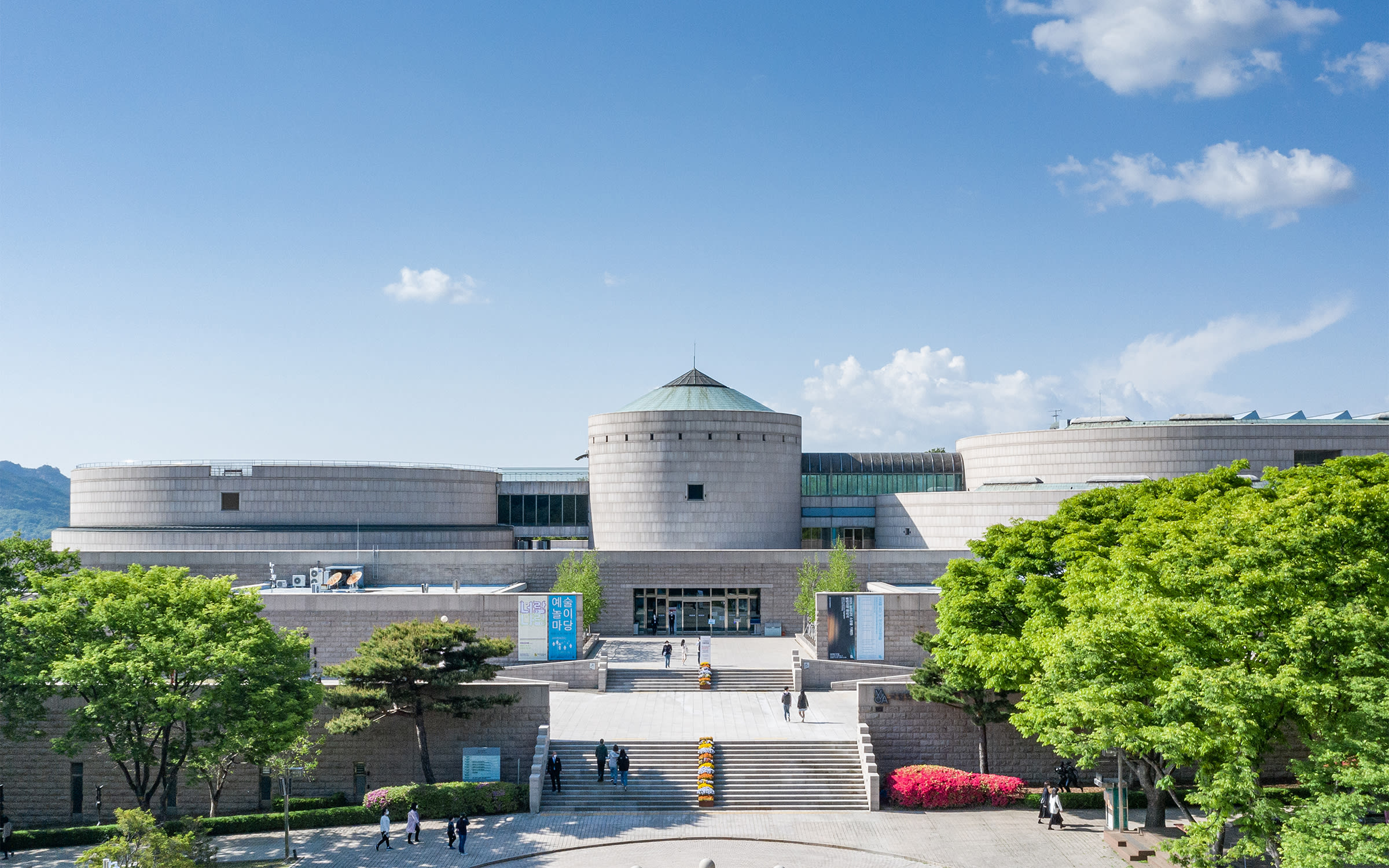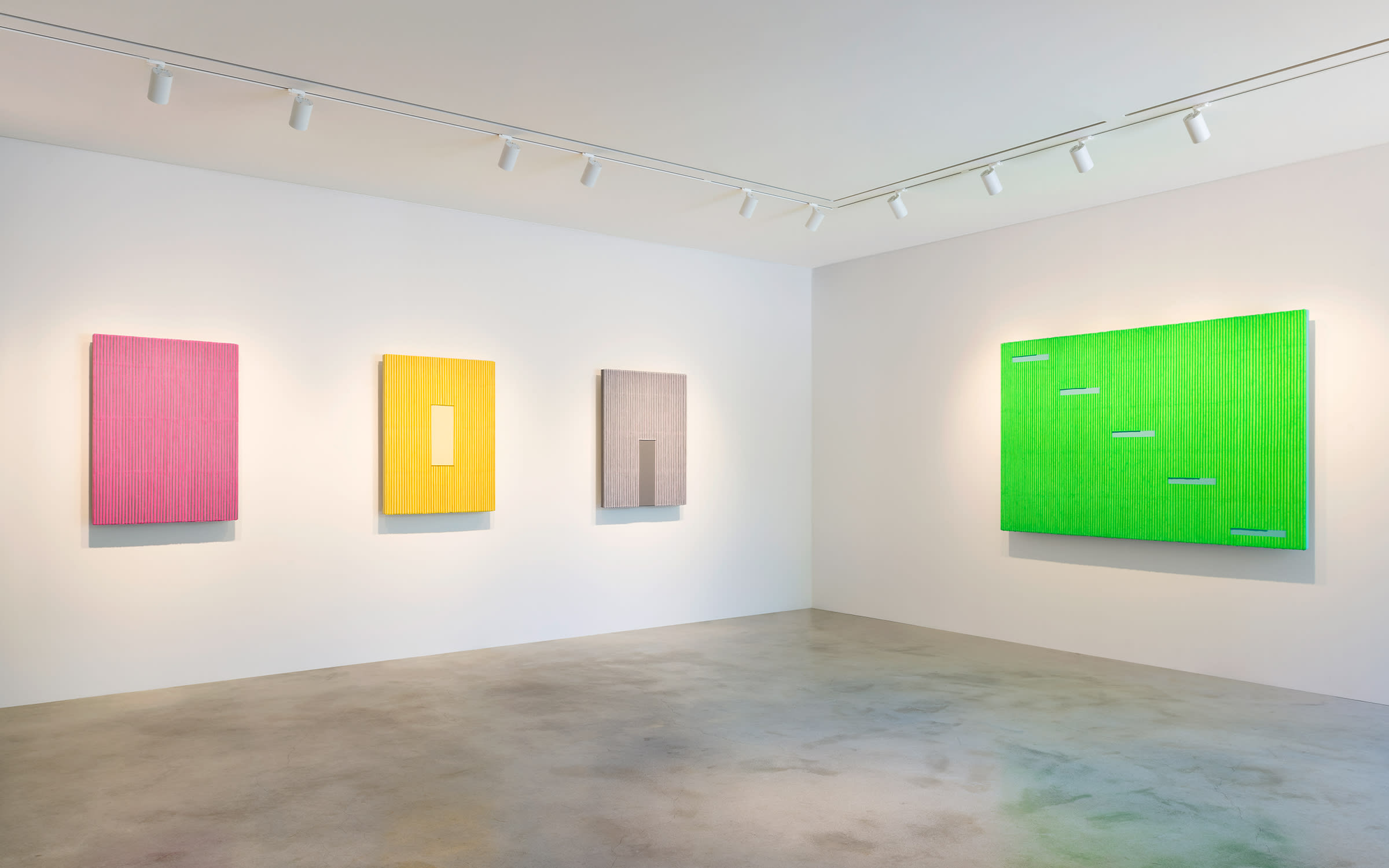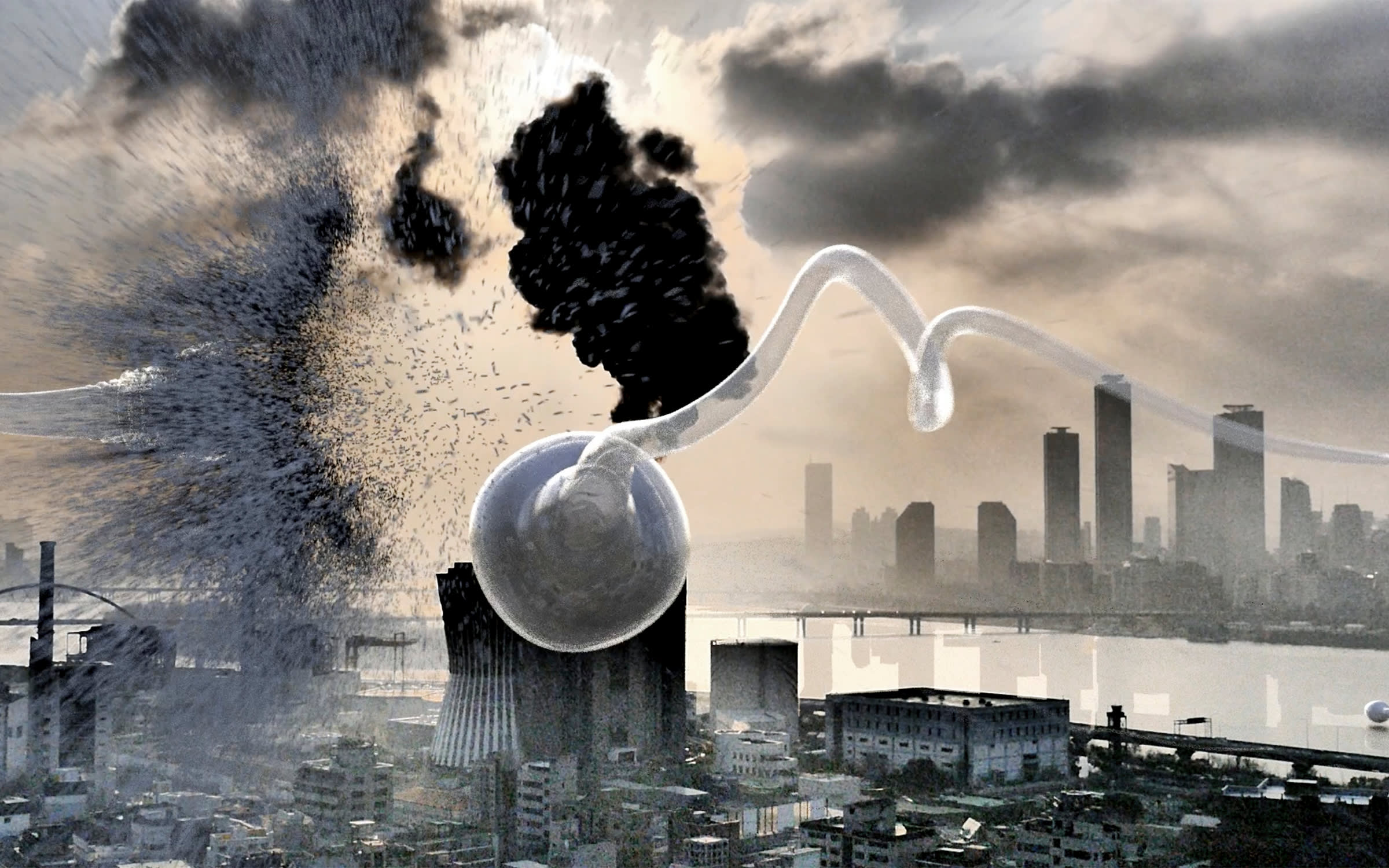In September 2022, Nam June Paik’s giant tower of 1,003 television sets, The More, The Better (1988), will start operating at the Gwacheon branch of the National Museum of Modern and Contemporary Art, Korea (MMCA). The work’s title signals Paik’s view of an evolving world: The more technology, the better global communications will become.
Paik, who would have celebrated his 90th birthday this year, was all about making global connections. In 1993, he initiated the staging of the Whitney Biennial in Seoul, held between July 31 and September 8 at the MMCA’s location in Seoul – the first time a Whitney Biennial traveled. Paik’s initiative introduced 61 international artists, including Byron Kim and Jonas Mekas, to Korean audiences, marking a breakthrough in the Korean contemporary art scene. The launch of the Gwangju Biennale quickly followed in 1995.

But while more renowned globally, the Gwangju Biennale is not the oldest of Korea’s contemporary art biennales. The Busan Biennale has its origins in the Busan Youth Biennale, which was established in 1981. This year, Busan Biennale 2022, We, On the Rising Wave, is led by the artistic director Kim Haeju, and will take place from September 3 to November 6. With the support of the Busan Metropolitan City government, the show will focus on the history of Busan and its relationship to its local and international communities, with works by 64 artists and art collectives from 25 countries, including Mire Lee and Laure Prouvost.
Enjoying broad support from the state, the reach for global connections in the Korean art scene is deeply entangled with the country’s diplomatic endeavors. Since 2002, Kiaf Seoul, Korea’s longest-running art fair, has been committed to promoting contemporary Korean art to an international audience, with the support of the ministry of culture. Before it shifted focus in 2017 toward spotlighting galleries and artists in its Highlight and Solo Project sectors, Kiaf hosted special exhibitions of art from an invited country, including Japan, Germany, and Australia, to forge creative and commercial ties with the global artworld.
Korean galleries have played a critical role in elevating Korean art around the world. Kukje Gallery, established in 1982, has been active in deepening the discourses around post-war Korean artists, and raising the international profile of the Dansaekhwa movement, which emerged in Korea in the 1970s. The art historian and curator Yoon Jin Sup describes 'The Art of Dansaekhwa', held at Kukje Gallery in 2014, as a crucial exhibition that highlighted seven key figures of Dansaekhwa, including Lee Ufan and Park Seo-Bo. More recently, Kukje supported Ha Chong-Hyun’s survey show at Palazzetto Tito as a Collateral Event of the 59th Venice Biennale, organized with La Fondazione Bevilacqua La Masa and Tina Kim Gallery.
For Lee Hyun-Sook, founder and chairwoman of Kukje Gallery, the Korean art market has become truly global, with modern and contemporary Korean artists recognized on the international stage. Lee has also observed an increase in young Korean collectors from the so-called MZ generation, which encompasses Millennials and Generation Z born between 1981 and 2005. Of course, BTS is on hand to lead the generational charge. In 2020, BTS member Kim Nam-Joon donated KRW 100 million to the MMCA and was named ‘art sponsor of the year’ by the state-run Korea Arts Council.

The major news in Korea this year is the inaugural edition of Frieze Seoul in September, with an influx of international galleries opening branches in the Korean capital ahead of the launch, including Perrotin, Pace, Lehmann Maupin, König, Thaddaeus Ropac, Tang Contemporary Art, Gladstone, and Peres Projects. ‘Leading galleries worldwide are investing a lot in Korea,’ Lee says. ‘To not make this phenomenon a bursting bubble, Korean galleries must keep developing and nurturing their artists.’ In keeping, the eighth Korea Art Week in 2022, organized by the ministry of culture with the government agency Korea Arts Management Service, will be held nationwide between September 1 and 11, with 230 art institutions participating, including Art Sonje Center in Seoul and the Asian Culture Center in Gwangju.
Korea Art Week connects the country’s diverse arts landscape, which is naturally concentrated in the capital, where the Seoul Museum of Art (SeMA) has operated like a networked museum since its inception in 1988 by the Seoul City Council. SeMA links various parts of Seoul with the establishment of multiple branches across the city. There is the SeMA Seosomun Main Branch in the central Jongno area, Buk-SeMA in the north of the city, the Nam-SeMA in the south, with two more museums – the Photographic Arts Center and the Seo-SeMA – scheduled to open in Dobong and Geumcheon in 2023 and 2024 respectively. Then there are the more intimate spaces of SeMA Bunker, SeMA Storage, SeMA Nam June Paik Memorial House, and Nanji Residency, which has 25 studios, labs, and galleries for artists in residence, with SeMA Art Archives set to open in Jongno this year.
‘There are vast differences between each SeMA branch in size, character, and operation, as well as in the time and geographical location of each establishment,’ says SeMA director, Beck Jee-sook. ‘Each has individually incorporated Seoul’s unique historical and geographical experiences.’ While SeMA Bunker is housed in a remodeled military bunker in the financial district of Yeongdeungpo and showcases experimental projects by emerging local artists, the SeMA Seosomun Main Branch, whose architecture has been integrated with the historical façade of the former Supreme Court, presents exhibitions by established international names.
Given SeMA’s unique ability to network local, national, and global contexts, Beck doesn’t see a difference in how Korea’s art scene is developing connections across various artworlds. Established by the Seoul Metropolitan Government in 2000 and organized by SeMA, the Seoul Mediacity Biennale, Beck says, has worked with the museum’s programming symbiotically. ‘Since 2019, the Seoul Mediacity Biennale and SeMA’s series of exhibitions titled “Masterpieces from Overseas Collections” have been operating every other year, each taking its turn and mapping the status of public institutions, curatorial directions, and audience distribution differently.’
Corporate-run art museums such as Leeum, Samsung Museum of Art and the Amore Pacific Museum of Art are another axis of Seoul’s art ecosystem, along with corporate sponsors like Hyundai Motors. As part of The Hyundai Project: Korean Art Scholarship Initiative, Hyundai Motors has worked with the Los Angeles County Museum of Art (LACMA) since 2015 to develop exhibitions of traditional and contemporary Korean art. In September, LACMA will open The Space Between: The Modern in Korean Art (September 11, 2022-February 19, 2023), supported by the Korea Foundation. Curated by Virginia Moon, the show will illustrate the beginnings of Korean modern art through 130 works by 88 artists spanning 1897 to 1965.
As observed by Iwan Wirth in Public Art magazine this August, the art scene in Korea ‘has grown to include a sophisticated domestic infrastructure built on a long history of arts patronage.’ The SongEun Art and Cultural Foundation – established in 1989 by the late founder of the fuel company ST International, Yoo Sung Yeon – promotes young Korean artists through its awards and exhibitions at SongEun ArtCube and SongEun ArtSpace, now both incorporated into SONGEUN and since 2021 housed in a space in Gangnam designed by Herzog & de Meuron. Other spaces also play their role. Founded in 1999 in Seoul’s Mapo neighborhood, Alternative Space Loop is known as Korea’s first alternative space, supporting experimental Korean artists like Ham Kyungah and international artists such as Fahrettin Örenli. Positioned as an antidote to the neoliberal culture, Loop has organized group exhibitions that have included 2021’s Simple Thoughts: Ecology–Gender–Communism, which focused on the themes of ecology, gender, and socialism, with creators including the social critic Kim Gyuhang and the artist Ryu Biho.
Many project spaces have followed. Saga, founded in 2021, operates ‘episode’, ‘lesson’, and ‘event’ programs instead of exhibitions. Run by a joint operating committee, the space is ‘trying to stay free of public funding,’ says Saga’s director, Lee Yangheon. In 2022, Saga and KwanHoon Gallery presented the webtoon artist GuiGui’s solo show and sold non-fungible tokens (NFTs) on OpenSea to generate funds. Saga’s engagement with new technologies connects back to the legacy of Paik, who would have probably enjoyed the NFT sphere, given its expansive networks and communities. But that expansion also resonates in the real world, where Korea’s arts landscape is evolving. As with Paik’s tower of televisions, with the monitors coming together to form a monumental work of art, every component of Korea’s arts community emits its unique channel that intersects and coordinates with all the other components of asophisticated network.
Jung Sujin is a writer and curator based in Gwangju and Seoul.

Discover more related content below:
Captions and credits for full-bleed images, from top to bottom: 1. Sungeun Building. © Iwan Baan. 2. Detail of a work by Ha Chong-Hyun, presented in the Unlimited sector at Art Basel's 2021 edition in Basel by Kukje Gallery. 3. Facade of the SeMA Seosomun Main Branch. Courtesy of Seoul Museum of Fine Arts. 4. Sungeun Building. © SONGEUN Art and Cultural Foundation and the Artist. All rights reserved.